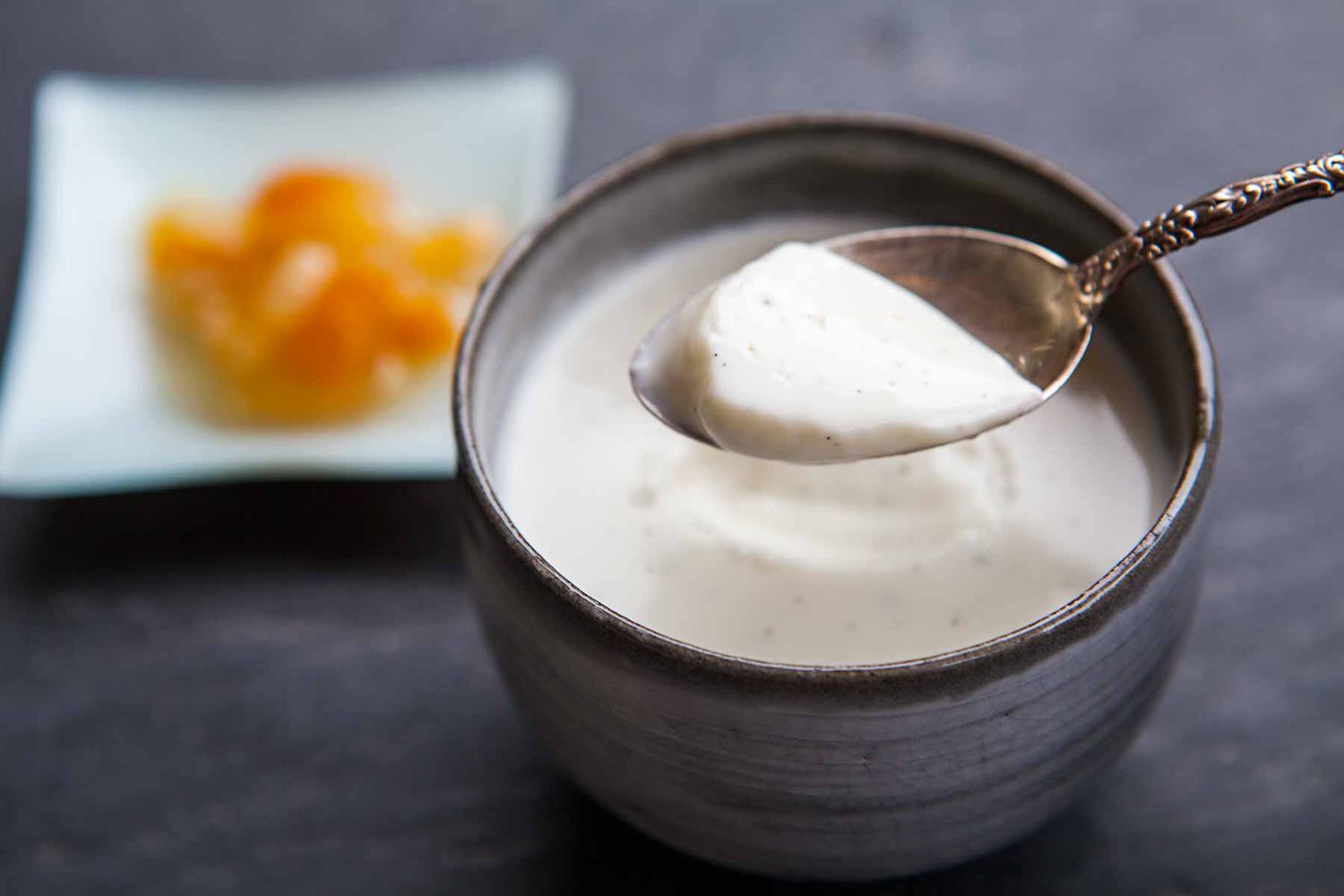Creating your own buttermilk at home is a simple and quick process. This homemade version is perfect for baking and cooking, adding a tangy flavor and tender texture to your dishes. With just two basic ingredients, you can whip up a batch of buttermilk in no time.
If you don't usually keep lemon juice or white vinegar in your pantry, you'll need to pick up one of these acidic ingredients from the supermarket. Both are essential for curdling the milk and creating the characteristic tangy flavor of buttermilk.

Ingredients For Buttermilk Recipe
Milk: The base of the recipe, providing the liquid and creamy texture.
Lemon juice: An acidic ingredient that curdles the milk, creating the tangy flavor of buttermilk.
White vinegar: An alternative acidic ingredient to lemon juice, also used to curdle the milk.
Technique Tip for Making Buttermilk
When making buttermilk, ensure the milk is at room temperature before adding the lemon juice or vinegar. This helps the acid to curdle the milk more effectively, giving you a thicker and more authentic buttermilk.
Suggested Side Dishes
Alternative Ingredients
1 cup whole or 2% milk - Substitute with 1 cup almond milk: Almond milk can be used as a dairy-free alternative, though it may slightly alter the flavor and texture.
1 cup whole or 2% milk - Substitute with 1 cup soy milk: Soy milk is another dairy-free option that provides a similar consistency to cow's milk.
1 tablespoon lemon juice or white vinegar - Substitute with 1 tablespoon apple cider vinegar: Apple cider vinegar can be used in place of lemon juice or white vinegar to create the acidic environment needed to curdle the milk.
1 tablespoon lemon juice or white vinegar - Substitute with 1 tablespoon cream of tartar: Cream of tartar can also be used to acidify the milk, though it may require more mixing to fully dissolve.
Other Alternative Recipes Similar to This
How to Store or Freeze Buttermilk
- To store your homemade buttermilk, pour it into a clean, airtight container. This will help maintain its freshness and prevent any unwanted odors from seeping in.
- Place the container in the coldest part of your refrigerator, typically the back of the bottom shelf. This ensures that the buttermilk stays at a consistent, cool temperature.
- Use your buttermilk within 1-2 weeks for the best flavor and quality. Always give it a good shake before using, as it may separate over time.
- If you find yourself with an abundance of buttermilk, consider freezing it. Pour the buttermilk into ice cube trays, filling each compartment about three-quarters full to allow for expansion.
- Once frozen, transfer the buttermilk cubes to a resealable freezer bag or airtight container. Label the bag with the date to keep track of its freshness.
- Frozen buttermilk can be stored for up to 3 months. When you're ready to use it, thaw the desired amount in the refrigerator overnight or at room temperature for a few hours.
- Keep in mind that the texture of buttermilk may change slightly after freezing, becoming a bit grainy. However, it will still work perfectly in baking and cooking recipes.
- For best results, give thawed buttermilk a good whisk or blend to restore its smooth consistency before incorporating it into your recipes.
How to Reheat Leftovers
For a quick and easy method, use the microwave. Pour the buttermilk into a microwave-safe container. Heat on medium power for 30-second intervals, stirring in between, until it reaches the desired temperature. Be careful not to overheat, as it can curdle.
If you prefer a more controlled approach, use the stovetop. Pour the buttermilk into a small saucepan. Heat over low to medium heat, stirring constantly to prevent curdling. Remove from heat once it’s warm enough.
For a gentle and even reheating, use a double boiler. Fill the bottom pot with water and bring it to a simmer. Place the buttermilk in the top pot and stir occasionally until it’s warmed through.
If you have a slow cooker, this can be a hands-off method. Pour the buttermilk into the slow cooker and set it to the warm setting. Stir occasionally until it reaches the desired temperature.
For a more traditional method, use a water bath. Place the buttermilk in a heatproof bowl. Set the bowl in a larger pot filled with hot water. Stir occasionally until it’s warmed through.
Best Tools for Making Buttermilk
Measuring cup: To accurately measure 1 cup of milk.
Tablespoon: To measure 1 tablespoon of lemon juice or vinegar.
Stirring spoon: To mix the milk and acid together.
Timer: To keep track of the 5-10 minutes waiting period.
Refrigerator: Optional, to keep the buttermilk cold if not used immediately.
How to Save Time on Making Buttermilk
Prepare ingredients in advance: Measure out milk and lemon juice or vinegar ahead of time to streamline the process.
Use a timer: Set a timer for the 5-10 minute wait to ensure you don't forget about your buttermilk.
Make extra: Prepare a larger batch of buttermilk and store it in the fridge for future recipes.
Use a whisk: Stir the milk and acid mixture with a whisk to ensure it combines quickly and evenly.
Room temperature ingredients: Use milk at room temperature to speed up the curdling process.

Buttermilk Recipe
Ingredients
Main Ingredients
- 1 cup Milk whole or 2%
- 1 tablespoon Lemon juice or white vinegar
Instructions
- Pour the milk into a measuring cup.
- Add the lemon juice or vinegar to the milk.
- Stir well and let it sit for 5-10 minutes.
- Use as needed in your recipe.
Nutritional Value
Keywords
More Amazing Recipes to Try 🙂
- Crab Legs with Garlic Butter Sauce Recipe25 Minutes
- Zucchini Fritters Recipe25 Minutes
- Baked Tortilla Chips Recipe20 Minutes
- Mediterranean Dip Recipe10 Minutes
- Wilted Lettuce Salad Recipe15 Minutes
- Cheese Omelette Recipe10 Minutes
- Guacamole Recipe10 Minutes
- Patty Melts with Special Sauce Recipe35 Minutes

Leave a Reply